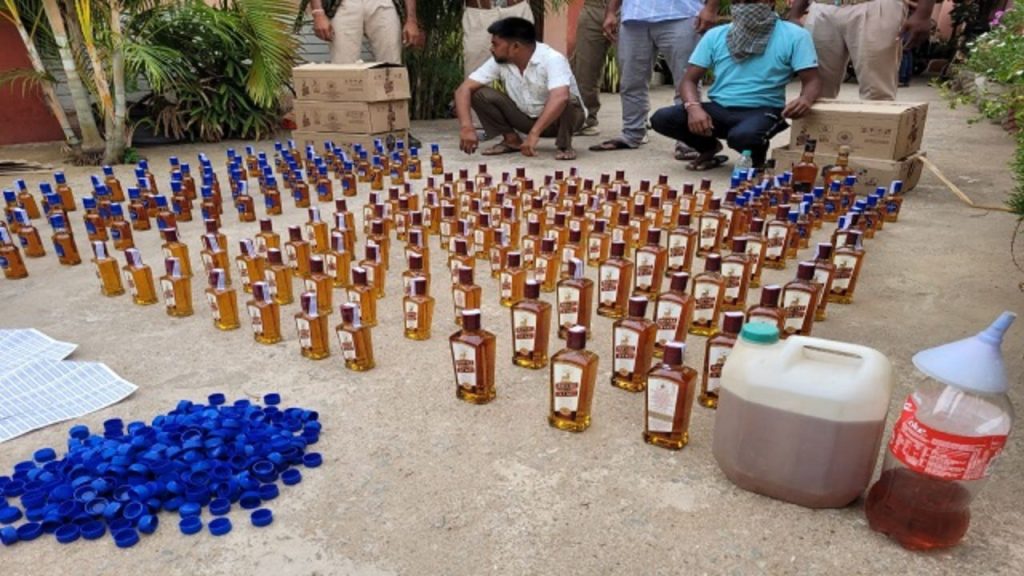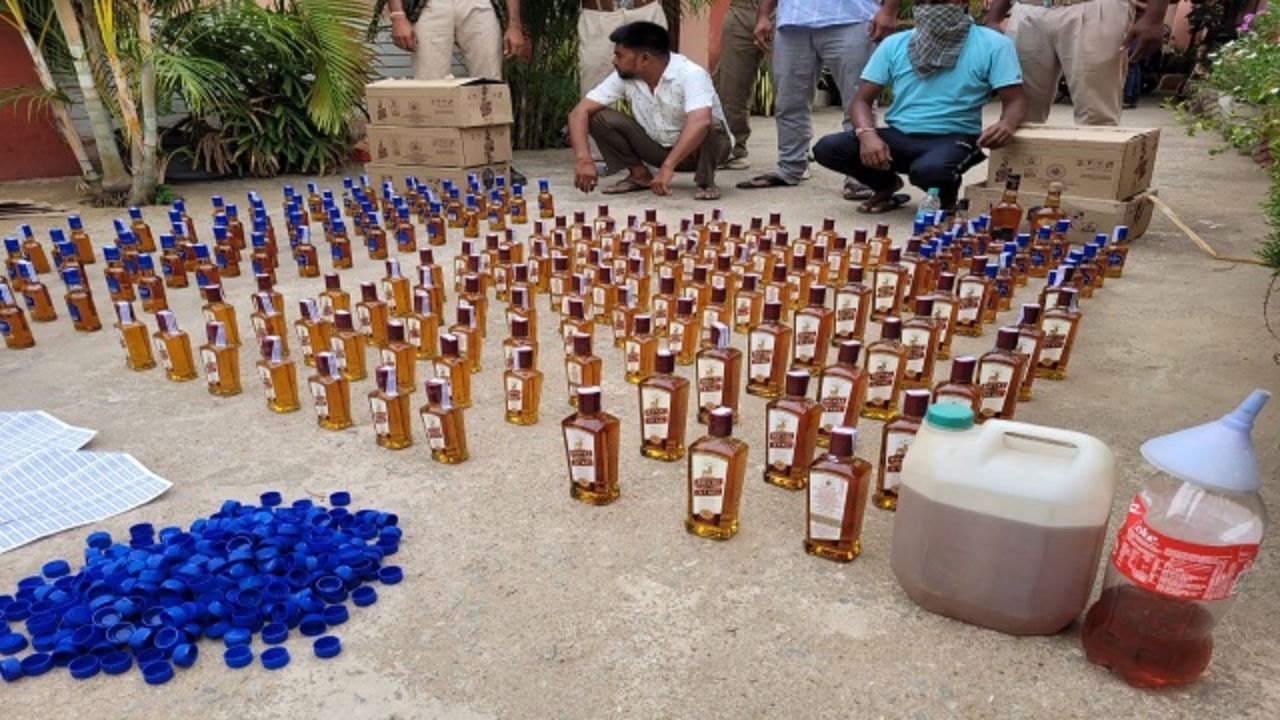CUTTACK, INDIA – Authorities in the eastern Indian state of Odisha have escalated a crackdown on the production and sale of illegal alcohol, with recent raids dismantling numerous illicit brewing units in the Athagarh forest division. This intensified Odisha anti-liquor drive aims to curb a dangerous black market responsible for significant health crises and revenue loss, reflecting a key priority for the state’s newly formed government.

Odisha Intensifies Anti-Liquor Drive
| Key Fact | Detail / Statistic |
| Location of Raid | Athagarh Forest Division, Cuttack District Press Trust of India |
| Agencies Involved | Odisha Excise Department, Local Police Force |
| Items Destroyed | Over 110,000 liters of fermented wash, hundreds of illicit liquor pouches The Times of India |
| Stated Goal | Eradicate the manufacturing and trade of illicitly distilled liquor |
Statewide Enforcement Targets Illicit Hubs
In a series of coordinated operations, teams from the Odisha Excise Department and local police penetrated deep into the forested areas of Athagarh, a region long considered a hub for the illicit liquor trade. Officials reported the destruction of more than 25 illegal liquor manufacturing units. During the raids, law enforcement seized and destroyed over 110,000 liters of mahua wash—a fermented mixture used to produce country liquor—along with distilling equipment and thousands of pouches of the finished product.
“Our objective is a zero-tolerance policy towards illegal liquor,” said a senior excise official who was not authorized to be named publicly. “These operations in Athagarh are part of a broader, statewide directive to dismantle the entire supply chain of this dangerous trade, from production to distribution.”
The recent actions follow the formation of a new state government led by the Bharatiya Janata Party (BJP), which has signaled a more aggressive stance on crime and public health issues. The drive is being framed as crucial for preventing potential hooch tragedy events, where consumption of methanol-laced illegal alcohol can lead to mass poisonings, blindness, and death.

The Dangers and Drivers of Illegal Alcohol
The crackdown seeks to address a persistent and deadly problem in many parts of India. Illicitly brewed liquor, often called “hooch” or “country liquor,” is produced in unregulated conditions. Producers often add industrial methyl alcohol to increase potency, a cost-cutting measure that can turn the beverage into a deadly poison. According to data from India’s National Crime Records Bureau (NCRB), hundreds of people die each year from consuming spurious liquor.
Experts point to several socio-economic factors that fuel the underground industry.
- Poverty and Unemployment: For many in rural and economically depressed areas, brewing and selling illegal liquor provides a vital, if dangerous, source of income.
- Price Disparity: Legally produced and taxed alcohol is often significantly more expensive, pushing lower-income consumers toward cheaper, illicit alternatives.
- Accessibility: In remote villages, illegal brewers are often the only accessible source of alcohol.
“This is not merely a law-and-order problem; it is deeply rooted in economic distress,” explained Dr. Anjali Mohanty, a sociologist who has studied rural economies in Odisha. “While enforcement like this excise department raid is necessary to prevent immediate harm, a sustainable solution must include creating alternative livelihood opportunities for those involved in the trade.”
Challenges in Eradicating the Illicit Trade
Despite the recent successes, authorities face significant challenges in permanently shutting down the trade. Brewers often operate in remote, inaccessible terrains like dense forests and riverine areas, making detection difficult. They are also known to quickly re-establish their operations after raids.
The network is typically decentralized, with small, scattered production units that supply local sellers, creating a complex web that is hard for law enforcement to untangle completely. Past efforts have often resulted in a temporary disruption rather than a permanent halt to the industry.
The state government has said it is committed to a sustained campaign. Officials have emphasized a multi-pronged strategy that includes not only raids but also intelligence gathering, sealing of state borders to prevent smuggling, and public awareness campaigns about the dangers of consuming uncertified alcohol.
The effectiveness of the renewed Odisha anti-liquor drive will be closely watched in the coming months. Success will depend not only on the persistence of these raids but also on the government’s ability to address the underlying economic vulnerabilities that allow the illicit liquor trade to flourish.
Odia Workers Flock to Kerala in Search of Better Wages Amid Odisha’s Labour Crisis
Cuttack Administration Enforces ‘No Attendance, No Pay’ Policy on Mahanga Officials
FAQ
1. What is a “hooch tragedy”?
A “hooch tragedy” refers to a mass poisoning event caused by the consumption of illegally produced alcohol, known as hooch. This liquor is often contaminated with methanol, a toxic chemical that can cause blindness, organ failure, and death.
2. Why is illicit liquor so dangerous?
Unlike legally regulated alcohol, illicit liquor is produced without safety or quality controls. Producers may use contaminated water, unsafe equipment, and dangerously add industrial chemicals like methanol to increase the alcohol content, making it highly toxic.
3. What is the new Odisha government’s stance on this issue?
The new BJP-led government in Odisha has publicly committed to a “zero-tolerance” policy against the illicit liquor trade. The recent intensified raids are a direct reflection





